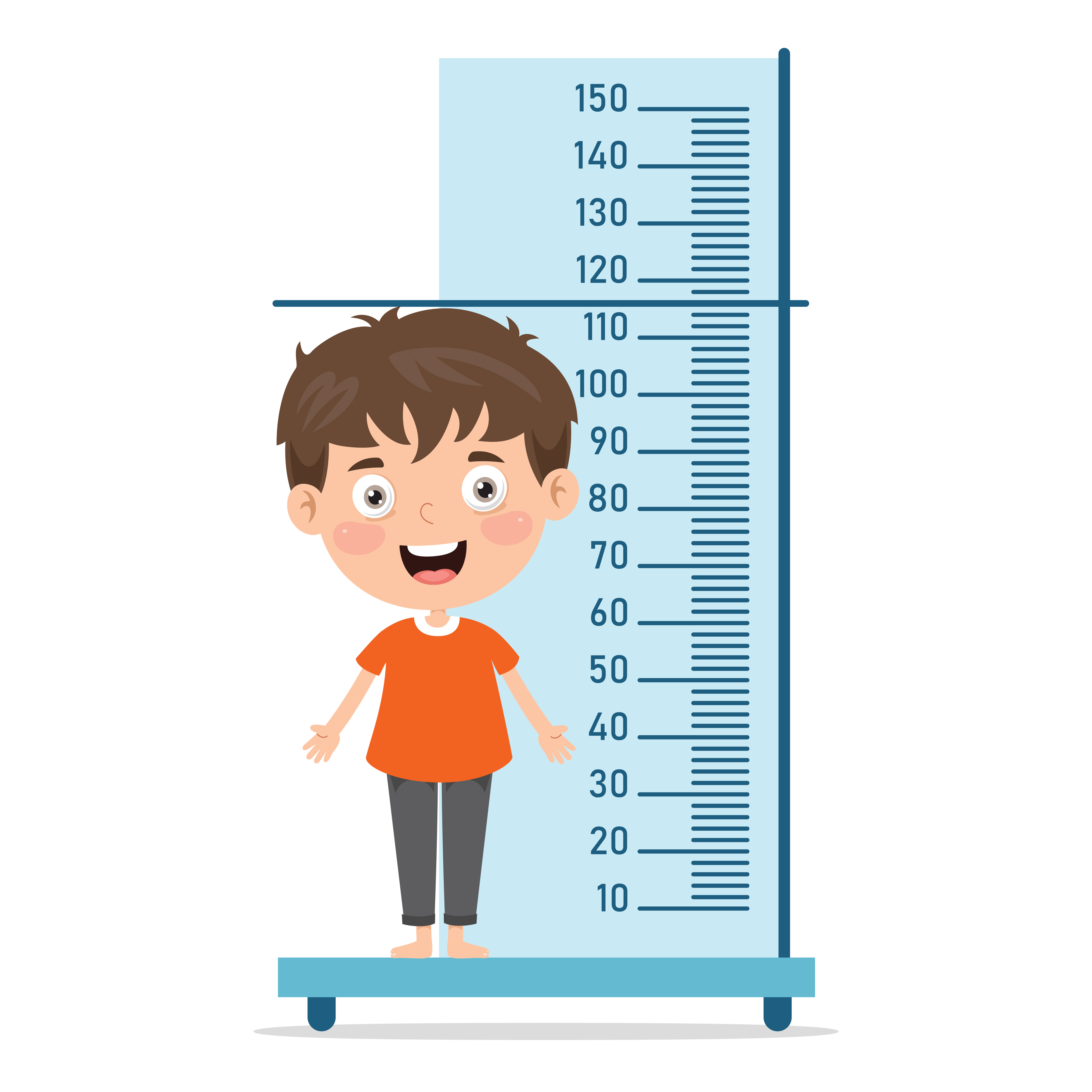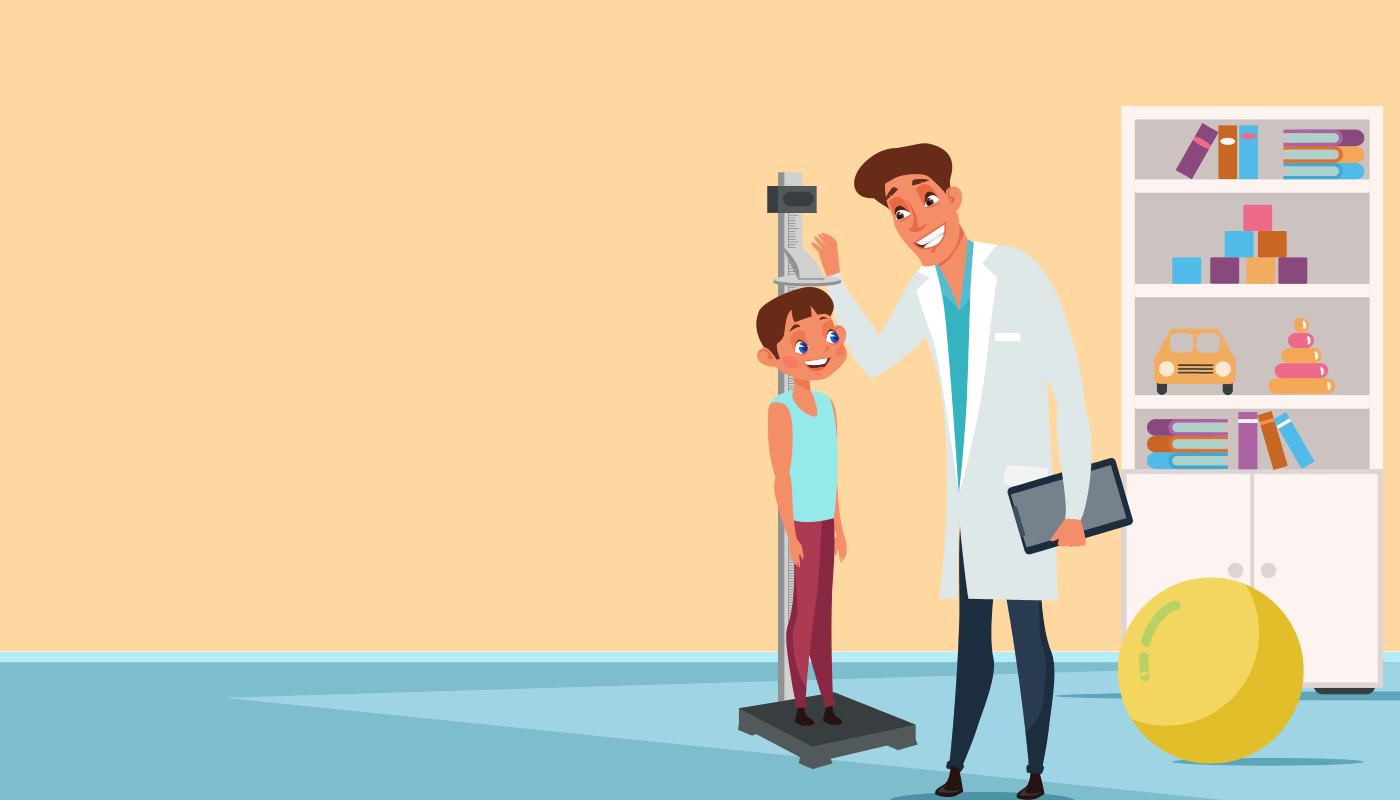Worried about your child's growth?
Normal growth is defined as the progression of changes in height, weight, and head circumference that are compatible with established standards for a given population.1
Measured in height, “normal” growth is described as growth of:2
- 0 to 12 months: about 10 inches (Growth during this phase is primarily a function of nutrition.)
- 1 to 2 years: about 5 inches (From the age of one, hormonal factors play an increasingly important role in your child’s growth.)
- 2 to 3 years: about 31/2 inches a year
- 3 years to puberty: about 2 inches a year
There is minimal difference in growth seen in boys and girls until puberty, which results in an average height difference of 4 inches to 5 inches between the sexes.
Reference
- Normal growth patterns in infants and prepubertal children. Available at: https://www.uptodate.com/contents/normal-growth-patterns-in-infants-and-prepubertal-children. Accessed on: September 2022.
- Growth Problems. Available at: https://www.childrenshospital.org/conditions-and-treatments/conditions/g/growth-problems. Accessed on: September 2022

About Child’s growth...
How does growth
occur?
Normal growth is influenced by environmental, genetic and hormonal factors. Studies have shown that non-pathological factors such as nutrition, psychological influences, physical activity, and climate play important roles in growth.3
- Environmental factors influencing growth include nutrition, psychological influences, physical activity, and climate.
- Common familial influences often seen on the height of children that imply important genetic effects on childhood growth include familial short stature and constitutional delay of growth and puberty. Mutations in genes that influence the hypothalamo–pituitary axis may adversely affect the production of growth hormone or its action.
- Growth hormone, the principal hormone involved in somatic growth and body composition. Other hormones that influence growth include thyroxine, adrenal androgens, sex steroids, glucocorticoids, ghrelin, leptin and insulin along with various neurotransmitters, metabolic modulators, and other external factors.
Reference
- 3. Wei C, et al. Paediatr Child Health. 2009;19(5):236–240.
Diagnosis
Symptoms of growth hormone deficiency depend on various factors such as the child's age and the cause. Children have poor overall growth rates, usually below 2 inches (5 centimeters) per year, and most have short stature but normal upper and lower body proportions. Some children may have a delay in tooth development or a delay in puberty. Other abnormalities may be present depending on the cause of the growth hormone deficiency. New born with growth hormone deficiency may have low blood sugar (hypoglycemia), jaundice (hyperbilirubinemia), or other congenital abnormalities such as a small penis (micropenis) in males or face defects (such as a cleft palate). Children may also have symptoms of other hormone deficiencies such as central hypothyroidism.5
Reference
- 5. MSD Manuals. Growth hormone deficiency in children. Available at: https://www.msdmanuals.com/en-in/home/children-s-health-issues/hormonal-disorders-in-children/growth-hormone-deficiency-in-children#.Accessed on: September 2022


Treatment for growth
- Growth hormone injection treatment is prescribed for children who have been diagnosed with growth hormone (GH) deficiency.6
- The doctor will advise you certain tests to confirm GH deficiency, or other conditions for which GH therapy is indicated.6
- GH treatment is a generally well tolerated effective way to treat GH deficiency stature.6
- Growth hormone (GH) is given through a subcutaneous injection, which means it goes into the fatty tissue just beneath the surface of the skin. GH can be given by a special injection device that looks like a pen. Because it is such a shallow injection, the needle is very small and does not hurt much at all.7
Although it takes about 3 to 6 months to realize any height differences, the important thing is that your child may grow probably 1 to 2 inches within the first 6 months of starting treatment. There may be a few other things you notice:6
- Your child may outgrow his or her shoes quickly. Foot growth may occur within 6 to 8 weeks, so you may have to buy new shoes more often.6
- Your child may want to eat more. An increase in appetite is common, especially if he or she had a poor appetite before treatment.6
- Your child may look skinnier for a while once height growth starts. An increase in lean body mass and decrease of fat mass are common with GH treatment.6
It may take a number of years for your child to reach his or her adult height, so you should be aware that GH treatment is often a long-term commitment
Reference
- 6. UPMC Children's Hospital of Pittsburgh.Fast Facts About Growth Hormone (GH) Treatment.Available at: https://www.chp.edu/our-services/endocrinology/resources/endocrinology-patient-procedures/growth-hormone-treatment.Accessed on: September 2022.
- 7. UPMC Children's Hospital of Pittsburgh. Growth hormone treatment. Available at: https://www.chp.edu/our-services/endocrinology/resources/endocrinology-patient-procedures/growth-hormone-treatment. Accessed on: September 2022.
Fast Facts about Growth Hormone Treatment
Growth hormone injection is prescribed for children diagnosed with growth hormone (GH) deficiency and other conditions causing short stature8
A number of other tests must be conducted first to confirm GH deficiency, Turner syndrome, or other conditions for which GH therapy is indicated8
GH treatment could be beneficial in the treatment of GH deficiency8

Reference
- 8: UPMC Children's Hospital of Pittsburgh. Growth hormone treatment. Available at: https://www.chp.edu/our-services/endocrinology/resources/endocrinology-patient-procedures/growth-hormone-treatment. Accessed on: September 2022.






